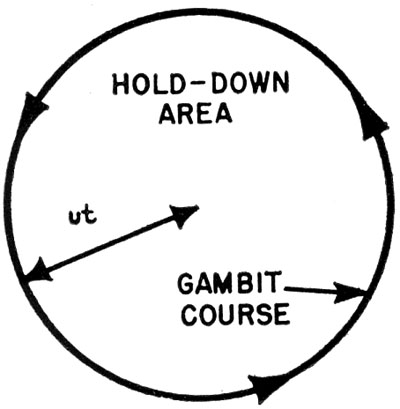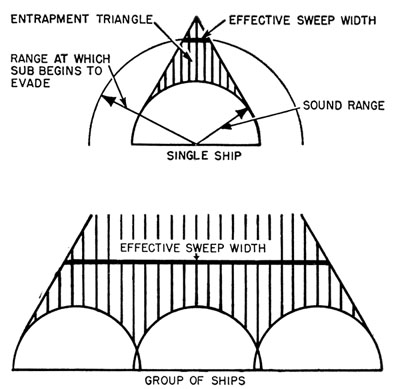
|
|
SUBSIM: The Web's #1 resource for all submarine & naval simulations since 1997
 |
SUBSIM: The Web's #1 resource for all submarine & naval simulations since 1997 |
|
|
 09-15-15, 07:47 PM
09-15-15, 07:47 PM
|
#1 |
|
Soundman
 Join Date: Aug 2015
Location: Australia
Posts: 147
Downloads: 42
Uploads: 0
|
I think I am not writing enough words and therefore coming across as an idiot who knows nothing about bombing, fuses etc. Let me start by saying that I know a lot more about aircraft than submarines and that flight sims were my first love of war simulation games. I agree totally that the way the game implements aircraft is unrealistic, the reason you supplied of giving the player a chance is probably spot on, since developers have to cater for the realists and the arcade players equally in order to maximise profit.
I don't think for one second they got closer than the fragmentation envelope of the bomb they were employing. I also am under no illusion that the bomb will fail to detonate after impact with the water becasue of damage to the bomb. After all they are designed to hit the ground at supersonic speeds. Furthermore I am not stupid enough to believe that Mythbusters provide anything more than proof of concept experiments. Your point about increasing projectile surface area / weight being confounded by muzzle velocity is correct. However the key concept, that high velocity impact with the water dramatically changes the projectiles behavior, is valid. My query revolves around how deep is deep enough both IRL and in the game. I have not seen aircraft bombs with delay fuses yet so the first question is how damaging would a surface detonation be to a submarine at various depths. I suspect not much at periscope depth The second question, which you got me thinking about, was how deep will a bomb penetrate underwater before detonation. Lets for a second assume that skipping of the bomb is a non issue. My feeling (please note how I distinguish between what I think by using emotive terms and what I can prove as fact) is that the bomb will lose almost all of its airborne energy upon impact with the water greatly reducing the speed at which it travels underwater particularly in the direction of depth. To get to 40ft with a 0.1 second fuse it is easy to see that it has to travel downward at 400ft per second, a value which I find very hard to believe. A half second fuse which you suggested would detonate at 225-375 feet deep would require downward motion equal to the impact velocity. This would defy the laws of physics. I found a book today entitled "Britain's Anit-submarine Capability 1919-1939" which stated that one report concluded that "for entry velocities of more than 250fps the trajectory curvature may be so great that accurate bombing of submarines at depths greater than 50ft would be impossible". I have probably taken this quote too far out of context but there must be a reason why planes carried depth charges instead of bombs. |

|

|
 09-15-15, 10:49 PM
09-15-15, 10:49 PM
|
#2 |
|
Eternal Patrol
 |
Airborne anti-submarine bombs used by the Japanese generally used a 3-second-delay fuse. The effective underwater range was given as 10 meters, which makes it about as powerful as an extra-large depth charge, and no good at much more than periscope depth.
Naval Weapons of World War II, by John Campbell
__________________
“Never do anything you can't take back.” —Rocky Russo |

|

|
 09-15-15, 11:51 PM
09-15-15, 11:51 PM
|
#3 | |
|
Silent Hunter
 Join Date: Sep 2010
Posts: 3,975
Downloads: 153
Uploads: 11
|
Quote:
I have no idea how deep a bomb in the game can go, or how that is determined, but I think as far as our safety is concerned, it is more a problem of how large the blast bubble is, than exactly where the bomb goes off. And of course, how deep can they see us. |
|

|

|
 09-15-15, 11:59 PM
09-15-15, 11:59 PM
|
#4 | |
|
Soundman
 Join Date: Aug 2015
Location: Australia
Posts: 147
Downloads: 42
Uploads: 0
|
Quote:
 That answers my second question completely. |
|

|

|
 09-16-15, 12:38 AM
09-16-15, 12:38 AM
|
#5 | ||
|
Gefallen Engel U-666
|
Quote:
 The teardrop-shaped United States Mark 9 depth charge entered service in the spring of 1943. The charge was 200 lb (91 kg) of Torpex with a sinking speed of 14.4 ft/s (4.4 m/s) and depth settings of up to 600 ft (180 m). Later versions increased depth to 1,000 ft (300 m) and sinking speed to 22.7 ft/s (6.9 m/s) with increased weight and improved streamlining. Roughly 5 seconds per 100 feet. Note the sink times: http://www.ussslater.org/tour/weapons/dpthchrg/dpthchrg.html The teardrop-shaped United States Mark 9 depth charge entered service in the spring of 1943. The charge was 200 lb (91 kg) of Torpex with a sinking speed of 14.4 ft/s (4.4 m/s) and depth settings of up to 600 ft (180 m). Later versions increased depth to 1,000 ft (300 m) and sinking speed to 22.7 ft/s (6.9 m/s) with increased weight and improved streamlining. Roughly 5 seconds per 100 feet. Note the sink times: http://www.ussslater.org/tour/weapons/dpthchrg/dpthchrg.html  And then watch out for serious hunting from the air in 'follow-on' attacks And then watch out for serious hunting from the air in 'follow-on' attacks http://www.ibiblio.org/hyperwar/USN/rep/ASW-51/ASW-13.html http://www.ibiblio.org/hyperwar/USN/rep/ASW-51/ASW-13.html Quote:
 The first to deploy depth charges from airplanes in actual combat were the Finns. Experiencing the same problems as the RAF with insufficient charges on anti-submarine bombs, Captain Birger Ek of Finnish Air Force squadron LeLv 6 contacted one of his navy friends and suggested testing the aerial use of standard Finnish Navy depth charges. The tests proved successful, and the Tupolev SB bombers of LeLv 6 were modified in early 1942 to carry depth charges. The success of the anti-submarine missions reached RAF Coastal Command, which promptly began modifying depth charges for aerial use. [wiki] Thank heavens there were so few Squids: note the sink rate: Squid consisted of a pair of three-barrel mortars whose pattern of six depth charges was normally fired dead ahead, but could be trained 30 degrees to the sides if warranted. Each charge weighed 390 lbs (177 kg) of which 207 lbs (94 kg) was minol. These had a sinking rate of 43.5 feet per second (13.3 m/s) and the fuses operated by clockwork. The pattern was overlapping triangles 40 yards (37m) on a side with the depth of the triangles set 60' (18m) apart. Squid was equipped with a fire control system that was tied directly into Type 147 sonar (no 'blind spot') and automatically set the detonation depth and fired the charges from the mortars at the right moment. It was estimated that Squid was nine times as effective as a conventional depth charge attack, or over twice as effective as Hedgehog, with about a 40.3% probability. The first to deploy depth charges from airplanes in actual combat were the Finns. Experiencing the same problems as the RAF with insufficient charges on anti-submarine bombs, Captain Birger Ek of Finnish Air Force squadron LeLv 6 contacted one of his navy friends and suggested testing the aerial use of standard Finnish Navy depth charges. The tests proved successful, and the Tupolev SB bombers of LeLv 6 were modified in early 1942 to carry depth charges. The success of the anti-submarine missions reached RAF Coastal Command, which promptly began modifying depth charges for aerial use. [wiki] Thank heavens there were so few Squids: note the sink rate: Squid consisted of a pair of three-barrel mortars whose pattern of six depth charges was normally fired dead ahead, but could be trained 30 degrees to the sides if warranted. Each charge weighed 390 lbs (177 kg) of which 207 lbs (94 kg) was minol. These had a sinking rate of 43.5 feet per second (13.3 m/s) and the fuses operated by clockwork. The pattern was overlapping triangles 40 yards (37m) on a side with the depth of the triangles set 60' (18m) apart. Squid was equipped with a fire control system that was tied directly into Type 147 sonar (no 'blind spot') and automatically set the detonation depth and fired the charges from the mortars at the right moment. It was estimated that Squid was nine times as effective as a conventional depth charge attack, or over twice as effective as Hedgehog, with about a 40.3% probability.
__________________
"Only two things are infinite; The Universe and human squirrelyness; and I'm not too sure about the Universe" Last edited by Aktungbby; 09-16-15 at 12:50 AM. |
||

|

|
 09-16-15, 12:58 AM
09-16-15, 12:58 AM
|
#6 |
|
Silent Hunter
 Join Date: Sep 2010
Posts: 3,975
Downloads: 153
Uploads: 11
|
Very interesting about the Squids there, Aktungbby. |

|

|
 09-16-15, 01:06 AM
09-16-15, 01:06 AM
|
#7 |
|
Gefallen Engel U-666
|
__________________
"Only two things are infinite; The Universe and human squirrelyness; and I'm not too sure about the Universe" |

|

|
 09-16-15, 07:36 AM
09-16-15, 07:36 AM
|
#8 |
|
Navy Seal
 |
Awesome information, Aktungbby. Over 40% accurate and the 1 knot silent running speed of the U-boats meant the Atlantic was safe. Except for the U-boats!
 Well, the stuff on the surface was safe, anyway. The only thing a sub could do about that attack was run out from under it and I don't even think a fleet boat could have done that. A Guppy II might have, but wow! Talk about a game changer...
__________________
Sub Skipper's Bag of Tricks, Slightly Subnuclear Mk 14 & Cutie, Slightly Subnuclear Deck Gun, EZPlot 2.0, TMOPlot, TMOKeys, SH4CMS |

|

|
 09-16-15, 09:53 AM
09-16-15, 09:53 AM
|
#9 | |
|
Gefallen Engel U-666
|
I just can't believe the math in the OEG link http://www.ibiblio.org/hyperwar/USN/rep/ASW-51/ASW-13.html of hunting techniques percentages from the air. Now I gotta worry about a 'reconnect' on my 'gambit course'. Reading Black May and seeing the Movie: A Beautiful Mind are required for
 ers. Really, once the science jocks discovered transit time across the Biscay Bay and U-Boat battery-endurance limits, the jig was up. the Triton version enigma of the Kreigsmarine and Dönitz's adding fourth rotor-wheel didn't give the Allies all that much edge in real time. I'm taking some aspirin and getting out my old trig tables: ers. Really, once the science jocks discovered transit time across the Biscay Bay and U-Boat battery-endurance limits, the jig was up. the Triton version enigma of the Kreigsmarine and Dönitz's adding fourth rotor-wheel didn't give the Allies all that much edge in real time. I'm taking some aspirin and getting out my old trig tables:  Quote:
 I thought Einstein was working on the bomb! They're hunting me with math; never mind what they'll actually kill me with! I thought Einstein was working on the bomb! They're hunting me with math; never mind what they'll actually kill me with!
__________________
"Only two things are infinite; The Universe and human squirrelyness; and I'm not too sure about the Universe" |
|

|

|
 |
|
|
